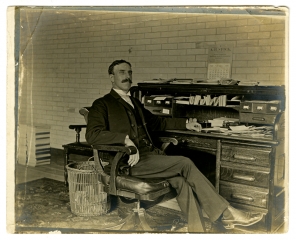public lectures for the recently established University Extension Program were all, no doubt, contributing factors toward his breakdown.
During the latter part of Smith’s, presidency, Professors Crawshaw and Brigham had jointly shared the duties of the office, amicably and harmoniously. From 1897 to 1899 Crawshaw was Acting President and in 1897 also he was made Dean, a position he was to fill with great distinction for 33 years. Though the double load from 1897 to 1899 was a heavy one, the generous support which James C. Colgate gave enabled him to carry the burden.
The Seminary, too, experienced administrative change. Professor William H. Maynard was made its first-Dean in 1891. He resigned in less than three months to be succeeded by the saintly and beloved Professor Hezekiah Harvey who served until his death in 1893. Professor Sylvester Burnham followed him from 1893 until 1913. In each instance these men continued their teaching while serving as Dean.
Reorganization in ‘the Treasurer’s Office included the resignation of William R. Rowlands in 1896 and the appointment of William M. West, President of the Hamilton bank, as his successor. Bookkeeping was modernized to provide closer supervision of accounts and, beginning in 1890, Treasurer’s Reports were published annually for distribution to the Trustees.
For all but two years during the period, 1890 to 1899, the accounts showed yearly deficits, often running to’ as much as $35,000. James B.





